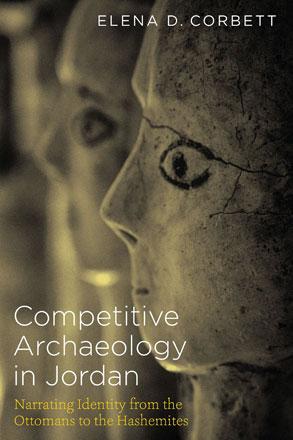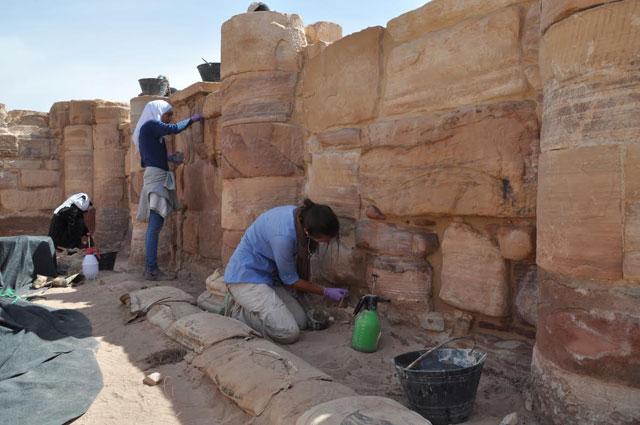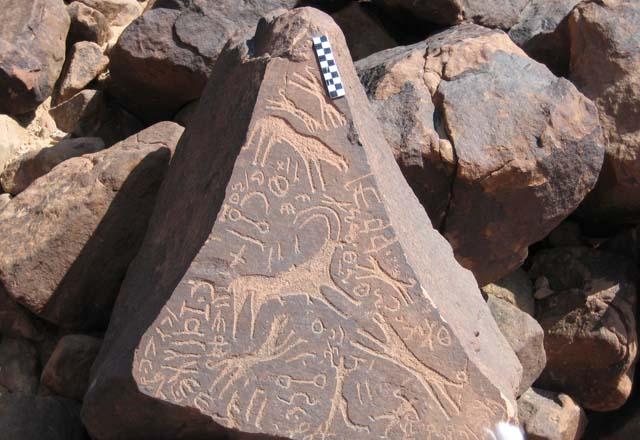You are here
Connecting antiquity to modernity
Jun 14,2015 - Last updated at Jun 14,2015

Competitive Archaeology in Jordan: Narrating Identity from the Ottomans to the Hashemites
Elena D. Corbett
Austin: University of Texas Press, 2014
Pp. 292
While there is mention of stones and columns, Elena Corbett’s “Competitive Archaeology” goes way beyond the digging sites to analyse how archaeology influences and is influenced by politics, history, nation-building and identity. The competition named in the title refers not only to the race to discover and appropriate particular artefacts, but to the rivalry among governments, institutions and individuals aiming to shape and possess the cultural heritage and historical narrative they imply.
Corbett’s work is groundbreaking in several respects. Much has been written about how archaeology contributes to national identity and historical narratives in Egypt, Iraq, Turkey and Israel, but, until now, there “have been no extensive considerations of the uses and meanings of archaeological heritage in Jordan.” (p. 13)
This is the first book to present “a history of archaeology in Jordan and Palestine, considered through the lens of Jordanian history and the importance of Jerusalem within changing narratives of that history.” (p. 3)
Corbett includes totally original research on how the late Ottoman authorities dealt with archaeology. She also injects the human element, contrasting the different angles from which foreign and local archaeologists view archaeological finds, and how professionals’ perception of antiquities may differ from that of the people who live in or among them. As she points out, most sites have multiple meanings, connected to the past and present. For example, “The Roman Theatre is not only a tourist attraction, but also a place for Ammanis’ mundane activities…” (p. 2)
Chapter 1 is titled “Archaeology is politics”. (p. 1) This assertion is shown to be true when early British (and American) exploration aimed to confirm that the material reality in the Holy Land corresponded to their biblical presuppositions — and to map the area for colonial and military intelligence purposes. It applies equally to the late Ottoman rulers’ emerging interest in archaeology and their highlighting of Muslim sites in the face of Western encroachments in Bilad Al Sham.
The second half of the book examines how the Hashemites approached the archaeological sites in Jordan’s territory — and for a time in Jerusalem and the West Bank — in order to construct a credible national narrative for their Kingdom. “They would ultimately cultivate many and varied aspects of Jordan’s holistic landscape, weaving together antiquity and modernity, to recalibrate narratives of the nation as circumstances dictated.” (p. 87)
In the course of this historical analysis, Corbett critiques Eurocentric approaches to archaeology, explains why some antiquities were prioritised over others, tells how the Arab reading public first became interested in archaeology, and “how narratives of antiquity might have fostered modern identity”. (p. 50)
Some of the most fascinating passages in the book discuss various theories about the origins of the Semites, Arabs, Canaanites, Nabateans and other ancient peoples of the area, and the interplay between these theories and modern Arab nationalism. Corbett is wise enough not to pronounce definitive conclusions about these theories, which are still subject to debate. The point is to show the connection between people’s ideas about the past and their contemporary self-image and sense of belonging.
Commentary on Jordan’s postage stamps, schoolbooks, tourism industry, the Historical Passageway at King Hussein Park, the new Jordan Museum and more further elucidate how heritage can be harnessed in the service of modernity and development. Along the way, Corbett presents a host of fascinating, little-known facts about Jordan’s past and present. To name only one, she points out the Jordanian archaeologist in charge of excavating and developing the Baptism Site is a Muslim, which has surprised some scholars and shown that Jordanians’ identification with heritage is not confined to their particular faith or tradition.
At first, the territory that became Jordan was neglected by most archaeologists. Situated between the holy landscapes of Jerusalem and the Hijaz, its known ancient sites, Petra and Jerash, were not thought to have the same religious resonance, and the latter was difficult to connect to indigenous civilisation (though locals surely did the actual building work).
However, from the 1950s onwards, archaeological work advanced to reveal the presence of a wide range of antiquities connected to the three monotheistic religions, and Jordan developed its own archaeological cadre. As a resource-poor country, “it is, perhaps, remarkable that Jordan has directed as many resources as it has for training archaeologists and caring for sites”. (p. 170)
Related Articles
AMMAN — Archaeological work in Jordan must place local communities at the heart of conservation and protection efforts, a researcher with ov
AMMAN — Given the numerous threats facing archaeological and cultural heritage sites in Jordan and the region, whether from war, development
Much has changed in archaeology since fictional hero Indiana Jones fought the Nazis in Cairo with bullwhip in hand in his quest for the Ark of the Covenant, the chest containing the tablets of stone inscribed with the Ten Commandments.


















